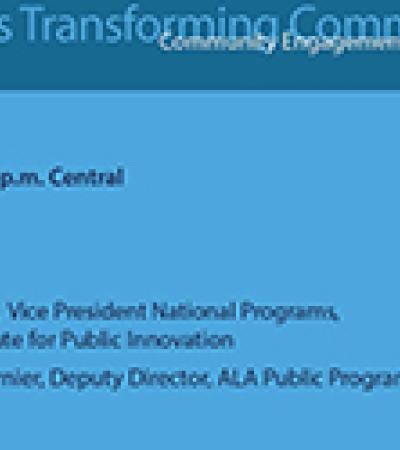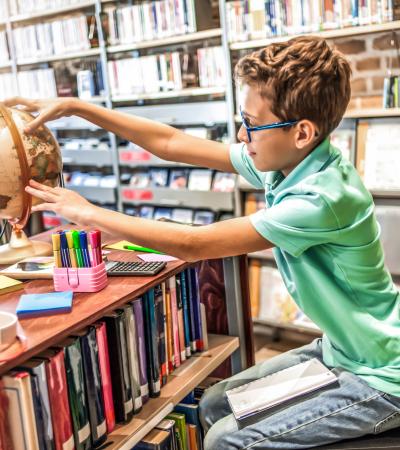As a homeschooled student, 11-year-old Ashley Clark lacks some resources offered at a typical school; for example, it’s not easy for her to find books at her reading level, which is high for her age. So every Thursday Ashley visits the Johnsburg (Ill.) Public Library with her grandmother to ask librarians for book suggestions, and she refers to the librarians as her friends.
“You can find all kinds of things (in the library) that you can’t find anywhere else,” Ashley said.
More than 1.7 million children are homeschooled in the United States, according to a 2013 National Center for Education Statistics report, and that number is on the rise — up more than 60 percent since 2003. Public libraries around the country are finding new ways to serve this population through physical spaces and creative programs catered to homeschooling families’ needs.
“Homeschoolers are usually looking for experts to help share their expertise with their kids,” said Adrienne Furness, director of the Henrietta Public Library in Rochester, N.Y. and author of “Helping Homeschoolers in the Library.” “That’s something they’re really grateful to come across, and at a public library, you can help.”
Johnsburg Public Library hosts “try before you buy” homeschool community center
Patron and homeschooling parent Kathy Wentz saw the potential for her local Johnsburg Public Library to provide much-needed support for the homeschooling community. Wentz, a former science teacher and activity coordinator for a homeschool group, noticed a gap in the library’s programming and took it upon herself to compile a list of 10 local homeschooling groups for the library to use as a reference guide.
“I’m a big believer in public libraries — that they should be, and are, the repository of knowledge for all age groups and for all citizens,” said Wentz, who homeschooled her two children, who are now college graduates. “I saw a tremendous number of people who had a lot of questions that the libraries were having a great deal of difficulty really helping people with.”
When Wentz presented librarians with the list, they were surprised to see so many groups. Later, after learning about grant opportunities, Wentz brought the idea of a resource center for homeschoolers to the library, and the library readily agreed by applying for an Library Services and Technology Act (LSTA) grant.
Wentz crafted a survey asking the homeschool groups what they wanted to see in the proposed center. Through the 112 survey responses, the library heard a strong demand for science materials and learned that parents wanted a way to preview curriculum materials before buying them. These responses guided the library in purchasing materials for the center from the $55,000 LSTA grant it received from the Illinois State Library in 2001.
The library’s 12-by-12-foot study room was soon converted into the Homeschool Resource Center, equipped with circulating microscopes, science kits, educational board games, software, curriculum materials and catalogs. The center is open to all patrons during library hours, and parents can schedule one-on-one meetings with Wentz, who is now the center’s volunteer consultant.
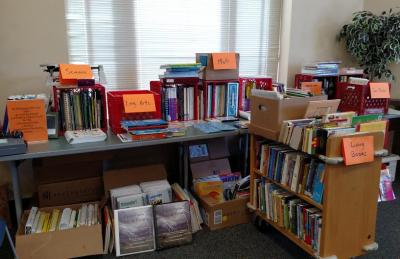
Wentz said the most popular feature of the Homeschool Resource Center is its “try before you buy” curriculum approach. Julia Crenshaw, a homeschooling parent and former public school teacher, said the center helps her sort through the large variety of textbooks and learning materials on the market.
“There are lots of different curriculum providers, and so I’ll go [to the library] and I’ll check out different curriculum that’s available there (to) find what’s going to work best for my kids,” Crenshaw said.
The “try before you buy” concept fuels a popular annual program at Johnsburg’s library: the Homeschool Resource Center Open House and Used Curriculum Flea Market. At the event, homeschooling parents buy and sell textbooks, picnic, meet authors and participate in a Q&A session. Wentz said the program is so popular that some vendors have to set up their tables in the parking lot because the library building is packed.
The HRC also sells items it receives as donations at the Used Curriculum Flea Market, and the proceeds go toward purchasing new materials, which helps the center become self-sustaining. Read more about the Used Curriculum Flea Market.
“It really doesn’t have to cost a lot to (run a center),” said Wentz. “It just takes someone willing to coordinate the whole process.”
Pikes Peak Library District advocates for free homeschool resources
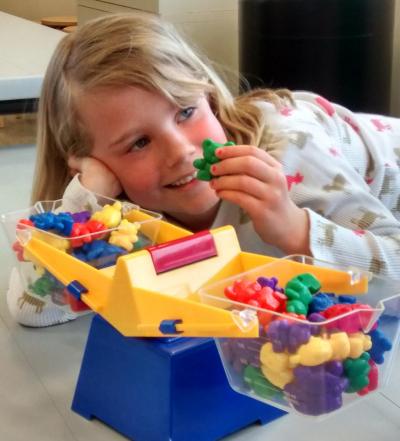
Like the Johnsburg library, the Pikes Peak Library District (Colorado Springs, Colo.) noticed a need for cost-effective resources for homeschooling families. Last October, with the support of its Homeschool Committee, the library opened its Educational Resource Center, a two-room space in its East Library branch that houses science lab equipment, math, language arts and social studies kits, music and art appreciation materials and virtual dissection and driver’s education software, as well as early literacy toys for younger siblings.
Gail Sohns, children’s librarian and head of the Homeschool Committee, said the group proposed the center because it wanted to help homeschooling parents financially.
“(Homeschooling) parents told us they spend anywhere from $250 to $1,000 per child each year to teach them,” said Sohns, who manages the Educational Resource Center. “They don’t get any help with that, even though they’re paying taxes just like everyone else does.”
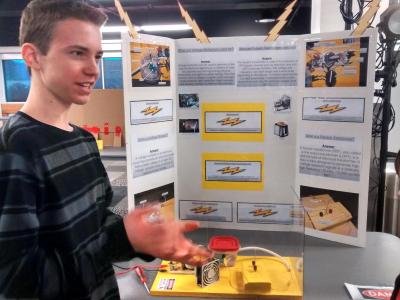
Although created with homeschooling parents in mind, the center is open to anyone for three hours a day, Monday through Thursday, and four hours a day, Friday and Saturday. Families can reserve the space on Friday mornings, and materials in the Educational Resource Center can be checked out for a two-hour period to be used elsewhere in the building.
In addition to this physical space, the library offers the Homeschool Hub, an online library space that hosts homeschooling reading lists, more than 400 web resources and a seasonal newsletter called Homeschool Connections that’s also available in print at all branches. The hub promotes the library’s many homeschooling programs, including science labs, art shows, curriculum swaps, outdoor game days and resource fairs.
This promotion seems to be working. Sohns notes that last February’s noncompetitive Homeschool Science Fair had more than 200 people and 30 projects, while its Homeschool Resource Fair last fall had more than 600 attendees.
“We are having to move things to a different location because of lack of space,” said Sohns. “The resource fair we used to have at my location, which is one of the larger buildings in the district, but we outgrew our biggest room.” Read more about the Homeschool Resource Fair.
Nashville Public Library provides nontraditional education setting with programs
The Nashville (Tenn.) Public Library also restructured its programs to make room for the increase in homeschool patrons. Its Main branch used to have one homeschool group for all ages, but when the number of attendees grew to 120, the library separated the group into two clubs: Homeschool Friends (ages 4 to 7) and Homeschool Tweens (ages 8 to 13).
Both groups meet once a month from 1:30 to 2:30 p.m.
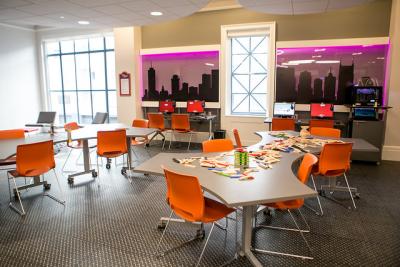
Lindsay Jensen, the children’s librarian at the Main branch and leader of the homeschool groups, said the programs have seen a steady increase in attendance without a lot of publicity.
“You have a base that comes back every month, but I’m always surprised how many friends they bring,” Jensen said. “They have really impressive networking strategies.”
Jensen makes decisions based on requests from the homeschool community; she asks club members at the first meeting in September what they’re interested in — receiving answers like “a princess party” and “tornados” — and plans the programs accordingly. The Homeschool Tweens are currently creating products using one of the library’s 3D printers.
The Nashville Public Library not only wants to make sure homeschool patrons know how to find materials, but also ensure they feel welcomed, Jensen said.
“We are their school library. They get to learn in a nontraditional setting, which I think is wonderful, and then they have this huge resource at their disposal,” said Jensen. “It’s important for us to reach out to them so they can get to know us as intimately as if we were down the hall from their classroom in a traditional school.”
Libraries gain homeschool perspectives by reaching out to community
For many homeschoolers like Ashley, the public library is the go-to place for materials and friendly book conversations. It’s also an essential space for parents; nearly 78 percent of homeschool parents use the public library as their resource for education materials, according to a 2003 National Center for Education Statistics report.
Whether online or in-person, through community centers or programs, these public libraries evolved to fit the needs of the growing homeschool population. For libraries that want to start offering homeschool resources, Furness first suggests reaching out to homeschool groups.
“Almost all areas have one,” said Furness, who has 18 years of experience working with homeschoolers. “Try to figure out who’s leading one and see: Can you survey them? Can you go to a meeting? Can you try to figure out their interests that you can actually do and figure out what time works for them? Because then you’ve got a built-in audience.”
Visit the following websites to contact leaders in your local homeschool community:

